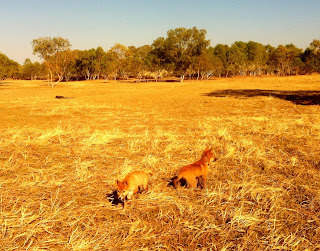YOU CALL THAT A TRIP?
Tammie recently took a trip back to Canada to catch up with the girls and carry out a few Canadian domestic chores. Tammie was only gone for 12 days and a whole chunk of that time was taken up in travelling.
This is how Tammie travelled to Canada and back to Tennant Creek, Northern Territory.
An early morning, 5am start for the 525 kilometre road trip to Alice Springs. It was still dark until 7am so you have to drive carefully as kangaroo’s, camels and other critters just love to stroll onto the road in front of speeding cars.
Arrive in Alice Springs after a four and a half hour plus drive pooped. No respite though as Tammie has to wait in a crowded Alice airport for her 3 hour Qantas flight to Melbourne.
Another wait and Tammie boards V Australia, to take her to Los Angeles. The plane is almost full so no room to spread out. The service is fine and Tammie is happy with the flight.
The happiness was short lived. Tammie had just 2 hours to alight from the aircraft and clear American Immigration and Customs....No Way. As is usual at LAX the line up of people was horrendous and the pace was slow. When you arrive through LAX you can never say it is a pleasant experience as the US officers are generally rude and aggressive. Welcome to the USA!
Needless to say Tammie missed her connecting flight to Vancouver and had to not only reschedule her onwards journey but the returns flights as well. What a pain in the butt not to mention the costs involved.
So Tammie had a six hour wait in LAX, not the most user friendly airport anywhere.
Finally it was time to board the Alaska Airlines flight to Vancouver a little under 3 hours from LAX. Alaska Airlines have a reasonably good reputation for a US airline but even so they aren’t all that flash.
What a relief to get to Canada and to be greeted by “nice Canadians.” Tammie was back home but still had a journey in front of her.
A couple of hours wait in Vancouver Airport one of the nicest airports in the world, before boarding an Air Canada Jazz for the 50 minute flight to Kelowna. This is just a small commuter aircraft that makes the short hop across the Rocky Mountains.
Tammie landed in Kelowna late in the evening and then had to get a hire car and drive 100 kilometres to Okanagan Falls, British Columbia.
The journey was over some 40+ hours after it started. And the lucky girl that she is, she gets to do it all again in 10 days time the only variation being that she flew Westjet to Vancouver.
After arriving back in Alice Springs Tammie had to do a dash to Tennant Creek in the car as we had tickets booked for La Traviata. Yes, the Australian Opera was in Tennant Creek for a one off performance.
FROM THIS:
Labels: Canada, dingo, Tennant Creek, travel



















